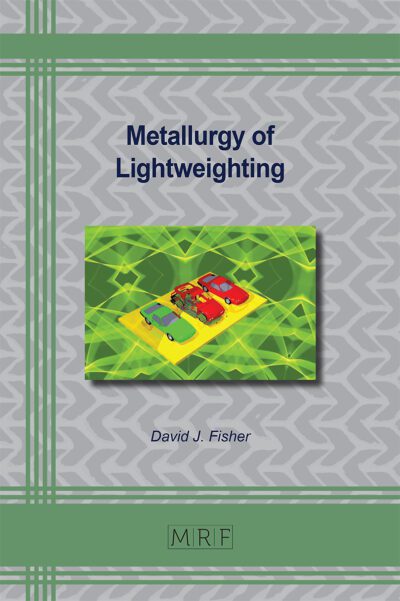Investigations of property-controlled flow forming with defined strain hardening using a virtual sensor
Jeannette BOLL, Robert LAUE, Frank WENDLER, Carolin BINOTSCH, Till CLAUSMEYER, Sebastian HÄRTEL, Olfa KANOUN, Birgit AWISZUS
Abstract. The advantage of (incremental) cold forming processes is that, in addition to the component geometry, the mechanical and physical properties can also be positively influenced. Appropriate control during the forming process is necessary to produce components with a defined geometry and defined, optimized product properties. To produce components with defined (graded) strain hardening by flow-forming a sensor for measuring the strain hardening was developed. Based on the measurement of magnetic permeability and magnetic anisotropy, control instructions are derived and forwarded to an actuator. Numerical simulation with Simufact Forming is used to evaluate the overall system and analyze the optimization of the product properties. In addition to the simulation of the flow-forming process, a virtual sensor for the strain hardening is applied based on the measurement of the experimental investigations. A subroutine was used to automatically adjust the roller feed within the simulation so that components with predefined hardening could be produced. The FE model is further used to optimize the real sensor position and functionality.
Keywords
Flow-Forming, Property-Controlled, Finite Element Method (FEM), Incremental Forming, Strain Hardening, Subroutine
Published online 5/7/2025, 10 pages
Copyright © 2025 by the author(s)
Published under license by Materials Research Forum LLC., Millersville PA, USA
Citation: Jeannette BOLL, Robert LAUE, Frank WENDLER, Carolin BINOTSCH, Till CLAUSMEYER, Sebastian HÄRTEL, Olfa KANOUN, Birgit AWISZUS, Investigations of property-controlled flow forming with defined strain hardening using a virtual sensor, Materials Research Proceedings, Vol. 54, pp 1313-1322, 2025
DOI: https://doi.org/10.21741/9781644903599-143
The article was published as article 143 of the book Material Forming
![]() Content from this work may be used under the terms of the Creative Commons Attribution 3.0 license. Any further distribution of this work must maintain attribution to the author(s) and the title of the work, journal citation and DOI.
Content from this work may be used under the terms of the Creative Commons Attribution 3.0 license. Any further distribution of this work must maintain attribution to the author(s) and the title of the work, journal citation and DOI.
References
[1] W. Hao, S. Duncan, Optimization of tool trajectory for Incremental Sheet Forming using closed loop control, 2011 IEEE International Conference on Automation Science and Engineering, Trieste, Italy, 2011, pp. 779-784. https://doi.org/10.1109/CASE.2011.6042410
[2] M. Bambach, T. Meurer, W. Homberg, S. Duncan, Editorial to special issue “Property-controlled forming processes.”, Advances in Industrial and Manufacturing Engineering. 4 (2022). https://doi.org/10.1016/j.aime.2022.100068
[3] J.M. Allwood, S.R. Duncan, J. Cao, P. Groche, G. Hirt, B. Kinsey, T. Kuboki, M. Liewald, A. Sterzing, A.E. Tekkaya, Closed-loop control of product properties in metal forming, CIRP Annals. 65 (2016) 2, pp. 573-596. https://doi.org/10.1016/j.cirp.2016.06.002
[4] S. C. Stebner, J. Martschin, B. Arian, S. Dietrich, M. Feistle, S. Hütter, R. Lafarge, R. Laue, X. Li, C. Schulte, D. Spies, F. Thein, F. Wendler, M. Wrobel, J. R. Vasquez, M. Dölz, S. Münstermann, Monitoring the evolution of dimensional accuracy and product properties in property-controlled forming processes, Advances in Industrial and Manufacturing Engineering. 8 (2024). https://doi.org/10.1016/j.aime.2023.100133
[5] J. M. Allwood, J. A. Polyblank, S. R. Duncan, Closed-loop control of product properties in metal forming: A review and prospectus, Journal of Materials Processing Technology. 214 (2014) 2333-2348. https://doi.org/10.1016/j.jmatprotec.2014.04.014
[6] F. Wendler, R. Laue, S. Härtel, O. Kanoun, B. Awiszus, Multifrequency Multichannel Eddy Current Sensor System for the Analysis of Mechanical States in Ferromagnetic Materials, Proceedings Sensor and Measurement Science International 2023 Conference. (2023) 203-204. https://doi.org/10.5162/SMSI2023/D1.4
[7] F. Wendler, R. Laue, S. Härtel, B. Awiszus, O. Kanoun, Design of a multi-modal sensor for the in-process measurement of material properties based on inductive spectroscopy, Measurement. 227 (2024). https://doi.org/10.1016/j.measurement.2024.114187
[8] W. Homberg, B. Arian, V. Arne, Softsensors: key component of property control in forming technology, Production Engineering Research Development. 18 (2024) 603-614. https://doi.org/10.1007/s11740-023-01227-1
[9] C. Joh, J. W. Lee, I. Kwahk, Feasibility Study of Stress Measurement in Prestressing Tendons Using Villari Effect and Induced Magnetic Field, International Journal of Distributed Sensor Networks. 9 (2013) 11. https://doi.org/10.1155/2013/249829
[10] R. Laue, F. Wendler, S. Härtel, O. Kanoun, B. Awiszus, Analysis of stress influence and plastic strain on magnetic properties during the forming process. Advances in Industrial and Manufacturing Engineering. 3 (2021). https://doi.org/10.1016/j.aime.2021.100053
[11] R. Laue, F. Wendler, S. Härtel, B. Awiszus, O. Kanoun, Eigenschaftsgeregeltes Drückwalzen im digitalen Zwilling, Proceedings Ideen Form geben – 36. ASK Umformtechnik. (2022) 349-358.
[12] R. Laue, Entwicklung des selbstregelnden Drückwalzens, Dissertation, TU Chemnitz, Berichte aus der Virtuellen Fertigungstechnik, 19 (2024)
[13] S. Kleditzsch, Beitrag zur Modellierung und Simulation von Zylinderdrückwalzprozessen mit elementaren Methoden. Dissertation, TU Chemnitz, Berichte aus der Virtuellen Fertigungstechnik, 11 (2014)














